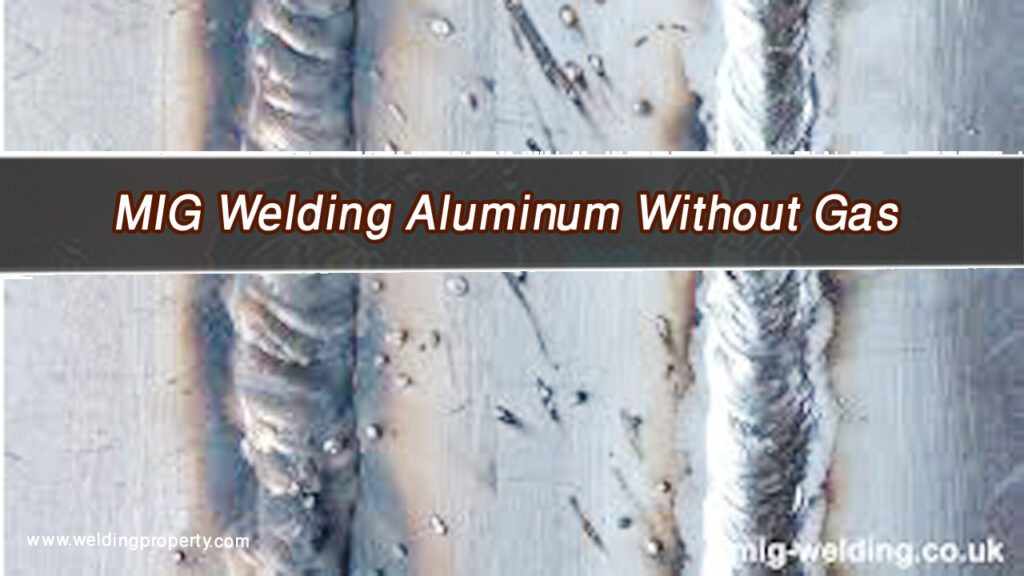When I first started welding, joining dissimilar metals like stainless steel to mild steel felt intimidating. After all, each metal has its own characteristics, and blending them seamlessly requires a thoughtful approach. However, with the right knowledge and preparation, MIG welding stainless steel to mild steel is not only doable—it can result in solid, professional-quality welds.

If you’re tackling this challenge for the first time, you’ve come to the right place. I’ll walk you through everything you need to know, from choosing the right materials to executing flawless welds. Whether you’re working on a custom project or repairing equipment, this guide will help you succeed.
Stainless Steel and Mild Steel
Before diving into techniques, let’s take a moment to understand the metals you’re working with:
Stainless Steel
Stainless steel is prized for its corrosion resistance and strength. Its chromium content forms a protective oxide layer, making it ideal for applications in harsh environments like kitchens or outdoors. However, this same property makes welding more challenging, as it requires precise heat control to avoid warping or oxidation.
Mild Steel
Mild steel is a low-carbon steel that’s easy to work with and weld. It’s more forgiving than stainless steel but lacks the corrosion resistance. Joining these metals combines the affordability and weldability of mild steel with the durability of stainless steel.
Challenges of MIG Welding Stainless Steel to Mild Steel
MIG welding these two metals presents a few challenges:
- Different Melting Points: Stainless steel has a higher melting point, requiring careful heat management.
- Cracking Risk: The weld pool’s composition can lead to brittle joints if filler material isn’t chosen correctly.
- Corrosion Resistance Loss: The area near the weld (heat-affected zone) can lose stainless steel’s corrosion resistance.
These challenges can be managed with the right techniques, and I’ll explain how to address them step-by-step.
Tools and Materials You’ll Need
Having the proper setup makes a world of difference. Here’s what you’ll need:
MIG Welder
Ensure your welder supports stainless steel and mild steel welding. Adjustable voltage and wire speed settings are crucial.
Filler Wire
Use a filler wire that’s compatible with both metals, such as an ER309L. This wire bridges the gap between the properties of stainless and mild steel.
Shielding Gas
A mix of argon and carbon dioxide (typically 98% argon, 2% CO2) works best for stainless steel to mild steel welding.
Cleaning Tools
Use a stainless steel wire brush and acetone to clean the metals before welding. Contaminants can compromise weld quality.
Safety Gear
Always wear a welding helmet, gloves, and protective clothing. Welding stainless steel produces more UV radiation and fumes than mild steel alone.
Preparing for MIG Welding
Preparation is critical to achieving strong, clean welds. Follow these steps:
Clean the Metals
Both stainless steel and mild steel should be free of rust, grease, and dirt. Use a stainless steel wire brush or grinder to clean the edges. Avoid using the same brush on both metals to prevent cross-contamination.
Fit the Joints Properly
Ensure the pieces fit snugly together. Gaps can make the weld weaker and more prone to cracking. Clamps or jigs can help maintain alignment.
Preheat the Mild Steel (Optional)
Preheating mild steel can reduce thermal stress and minimize the risk of cracking, especially in thicker sections.
Step-by-Step MIG Welding Guide
Welding stainless steel to mild steel requires precision and control. Here’s how to do it:
Step 1: Set Up the MIG Welder
Adjust the voltage and wire feed speed to suit the thickness of your metals. Stainless steel generally requires higher heat settings than mild steel.
Step 2: Choose the Right Shielding Gas
Use a gas mixture with low CO2 content (98% argon, 2% CO2). Too much CO2 can compromise stainless steel’s corrosion resistance.
Step 3: Tack Weld the Pieces
Start with tack welds at the corners to hold the pieces in place. This prevents distortion from heat buildup.
Step 4: Weld in Short Passes
Use a series of short, overlapping welds to control heat input. Stainless steel is more heat-sensitive than mild steel, so avoid long continuous passes.
Step 5: Maintain a Steady Angle
Hold the torch at a consistent angle (typically 10-15 degrees) and push the weld pool forward. This ensures even penetration and minimizes spatter.
Step 6: Inspect and Clean the Welds
Once complete, inspect your welds for defects like cracks or porosity. Clean the area with a stainless steel wire brush to remove slag and improve the appearance.
Tips for Better Results
From my experience, these tips can significantly improve your success:
- Use Proper Ventilation: Welding stainless steel generates more toxic fumes than mild steel, so work in a well-ventilated area.
- Practice on Scrap Metal: Experiment with settings and technique on scrap pieces before tackling your actual project.
- Cool Gradually: Allow the weld to cool slowly to prevent cracking and distortion.
MIG Welding Stainless Steel to Mild Steel
| Aspect | Stainless Steel | Mild Steel | Key Consideration |
|---|---|---|---|
| Melting Point | Higher | Lower | Adjust heat settings carefully |
| Corrosion Resistance | High | Low | Use appropriate filler material |
| Weldability | Moderate | Easy | Clean thoroughly before welding |
| Post-Weld Treatment | Required for corrosion resistance | Minimal | Clean and inspect weld area |
Applications for Stainless Steel to Mild Steel Welding
This type of welding is commonly used in:
- Fabrication Projects: Custom furniture, frames, and brackets.
- Automotive Repairs: Joining stainless exhaust systems to mild steel components.
- Industrial Use: Equipment that requires the strength of stainless steel with the cost-effectiveness of mild steel.
Common Mistakes to Avoid
Even seasoned welders can make errors. Watch out for these common mistakes:
- Using the Wrong Filler Wire: Always use an ER309L or equivalent wire to match the properties of both metals.
- Overheating the Stainless Steel: Excessive heat can cause discoloration and weaken the material.
- Skipping Cleaning Steps: Contaminants on the metal surfaces can ruin the weld.
Conclusion
MIG welding stainless steel to mild steel is a skill that takes practice, but it’s well worth mastering. By understanding the properties of each metal, preparing your materials correctly, and using the right techniques, you can achieve strong, durable welds that meet your needs.
If you’re working on a personal project or tackling professional repairs, this guide gives you the tools to succeed. Take your time, experiment with settings, and don’t hesitate to practice on scrap material before diving into the main project.
FAQs
Can I use the same filler wire for stainless steel and mild steel?
No, you should use a filler wire like ER309L, which is specifically designed for welding stainless steel to mild steel.
Why is shielding gas important in this process?
Shielding gas protects the weld pool from atmospheric contamination, ensuring a clean and strong weld.
Do I need to preheat the metals before welding?
Preheating is optional but recommended for thicker mild steel to reduce the risk of cracking.
Can I weld stainless steel to mild steel without a MIG welder?
Yes, but MIG welding is the most efficient and precise method for this combination. Alternatives like TIG or stick welding are also possible but require different setups.
How do I prevent cracking when welding stainless steel to mild steel?
Use the correct filler wire, control heat input, and allow the weld to cool gradually.

Endow Russel the owner chief editor of giftendow.com . I am a mechanical engineer and assign to an local firm with much experience in welding and industrial equipment.

